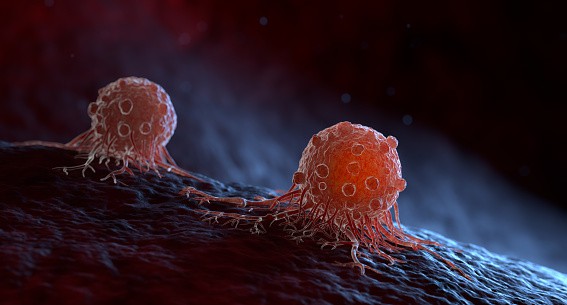
Exploring The Intersection Of Cilia And Cancer Biology With Genomic Technologies
Cancer is a complex and devastating disease that affects millions of people worldwide. As the field of cancer biology continues to make advances, so too does our understanding of how different biological processes interact with it. In particular, cilia have recently become an area of focus for researchers exploring the intersection between genomic technologies and cancer biology. Cilia are microscopic structures found on many cells in the body that play important roles in cell signaling and development. In this article, we will explore what current research tells us about the relationship between cilia and cancer, as well as their potential implications for treatment strategies.
Genomic technologies such as whole genome sequencing (WGS) provide invaluable insights into the genetic underpinnings of cellular behavior related to diseases like cancer. Through WGS, researchers can identify mutations or changes in gene expression levels associated with various forms of cancer.
This information has enabled scientists to gain insight into how cilia may be involved in tumor formation and progression at both molecular and cellular levels. Additionally, new tools such as single-cell sequencing allow researchers to examine individual cells within tumors more closely than ever before, providing further evidence that ciliary defects could affect tumorigenesis or response to therapy.
As our knowledge around the role of cilia increases, so too do questions surrounding the impact they have on cancer treatments. The answers to these questions could open up entirely new avenues for targeted therapies that aim to restore normal function while avoiding damage to other healthy tissues in order to maximize positive patient outcomes. By connecting existing findings from genetics and genomics studies with data from clinical trials, innovative approaches towards treating cancer may soon emerge from this promising field of study.
Definition Of Cilia And Cancer Biology

Did you know that one in three people will be affected by cancer during their lifetime? This statistic is a powerful reminder of the importance of understanding cancer and its underlying biology. Cilia and cancer are two topics that are closely intertwined, with genomic technologies playing an increasingly important role in our knowledge of the intersection between them.
Cilia are hairlike projections found on many cells throughout the body. They act as sensory organs and can detect changes in environment such as movement or temperature. Cancer occurs when abnormal cell growth causes damage to DNA, resulting in uncontrolled cellular division.
It has been linked to both genetic and environmental factors, making it difficult to study without advanced technology. Genomic technologies have revolutionized our ability to explore cilia and cancer biology at unprecedented depths. With this newfound power, researchers have gained insight into how these two seemingly unrelated fields interact with each other.
Role Of Genomic Technologies In Understanding Cilia And Cancer Biology
Now that we have discussed the definition of cilia and cancer biology, let’s explore how genomic technologies can help us to better understand their intersection. Genomic technologies offer a powerful tool for studying various aspects of both cilia and cancer biology.
By leveraging large datasets from genomics, researchers are able to identify genetic markers associated with disease susceptibilities or outcomes, as well as potential treatments. Additionally, these data can be used to investigate the role of specific genes in cellular processes related to cancer development or progression.
Moreover, genomic technologies allow scientists to gain insights into gene expression patterns that may provide clues about how genes interact within cells and tissues. This type of knowledge could lead to new approaches for treating or preventing diseases caused by mutations in these pathways. Understanding the molecular basis behind cilia-related cancers is essential for developing therapies targeted at improving patient outcomes. Thus, genomic technologies hold great promise for enhancing our understanding of this complex area of research.
Implications For Future Research On Cilia And Cancer Biology
The implications of cilia-cancer interactions and their related genomic data mining are staggering. Genomic technologies have opened up a world of possibilities, revealing the power that can be unleashed when investigating the underlying mechanisms behind these complex biological phenomena.
y unlocking insights into how cilia function in combination with cancer biology, researchers now have an unprecedented opportunity to revolutionize our understanding of gene regulation in both normal and malignant cells.
This newfound knowledge will undoubtedly lead us to more effective therapeutic strategies for treating cancers that involve ciliary activity. Furthermore, it may also provide key clues into why some forms of cancer are more resistant to treatment than others.
This could ultimately allow clinicians to develop better targeted treatments tailored directly to individual patients’ needs. The potential clinical implications of this research are clear; we must continue pushing forward on this front if we hope to make any tangible progress towards improving patient outcomes.
Conclusion
In conclusion, exploring the intersection of cilia and cancer biology with genomic technologies presents an exciting opportunity to make groundbreaking discoveries. It is like being a scientist in search of hidden treasure – it takes passion and dedication to sift through the data for meaningful patterns that reveal new insights into this complex area.
Using genomic technologies, we have already made substantial progress towards understanding how changes in cilia structure can lead to certain types of cancers. I am confident that further research will uncover even more connections between cilia and cancer biology, which could potentially open up new avenues for treatments or preventions.
Overall, my journey as a researcher at this intersection has been thrilling – from discovering novel pathways associated with ciliary function to unearthing links between defective ciliogenesis and tumorigenesis. This field continues to offer fascinating insight into the dynamic interplay between these two disciplines, giving us hope that one day our work may contribute to improving human health outcomes globally.
